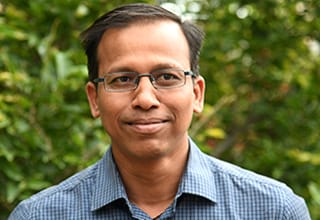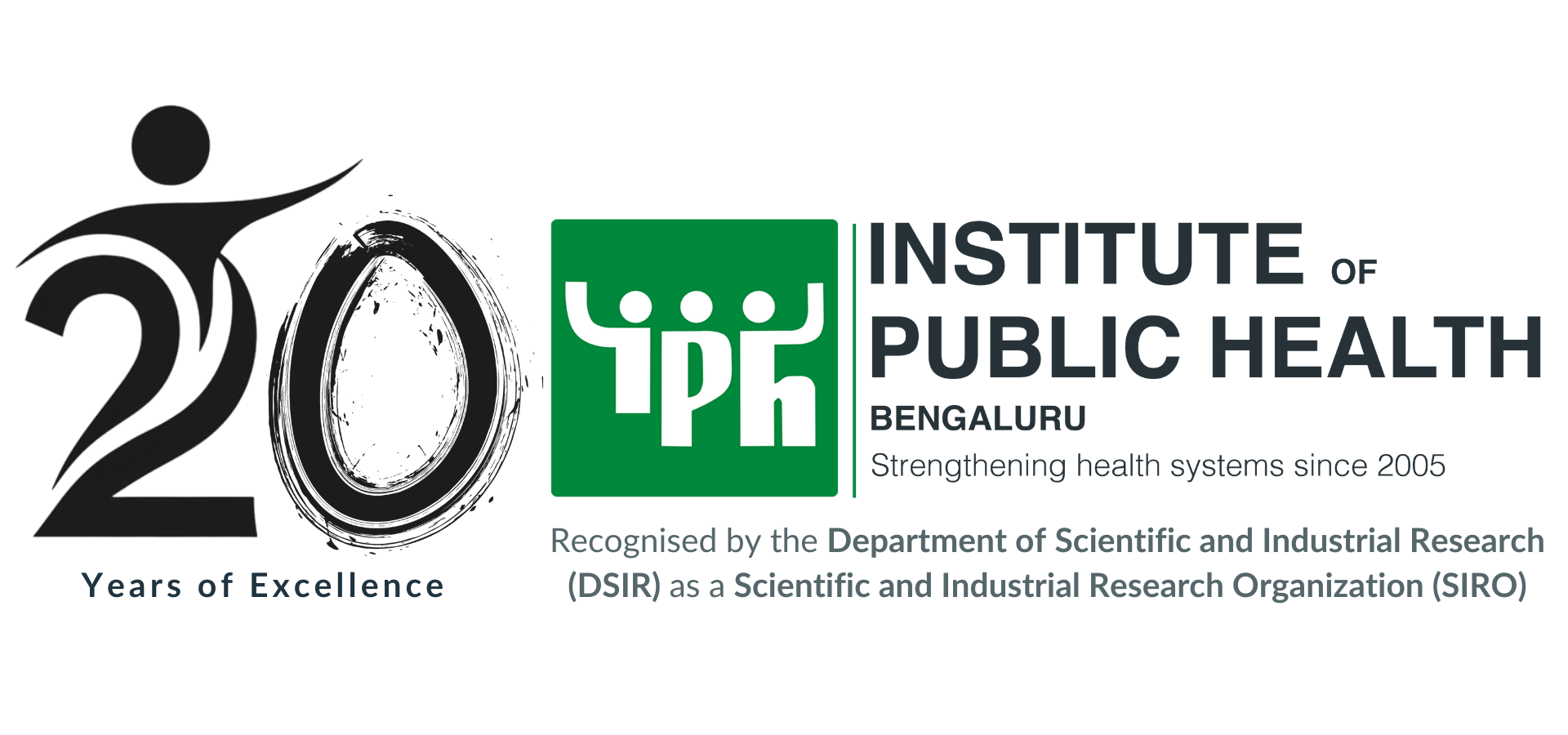Chronic Health Conditions & Public Policies
Chronic conditions are the health issues that require ongoing management over a period of years or decades. They include chronic non-communicable diseases (NCDs) but also a few communicable diseases and conditions (like disabilities) that lasts longer. The chronic conditions are on the rise globally and in India, where it has become a leading cause of deaths and disabilities. There are several factors implicated in the rise in chronic conditions, from genetics and individual lifestyle to changes in demography and the broader environment. Therefore,
In this cluster, we are specifically interested in how health policies and policies across other related sectors impact prevention and control of chronic conditions at a population level, including the major risk factors for such conditions such as tobacco and alcohol use, unhealthy diet and inadequate physical exercise. The cluster builds on the premise that broader social determinants of health operating at the macro- and the
Hence, our focus on public policies and intersectoral actions for health. In this context, we are also interested in studying the increasing role being played by commercial entities in shaping the epidemic of chronic conditions as well as the policy responses. The cluster aims to deepen our work on some of the relevant concepts/approaches including but not limited to ‘social determinants of health’, ‘political economy of health’, ‘health-in all policy’ and ‘harm industries’.
Tobacco control
In India, 28.6% of adults and 14.6% of youth – in total over 26.7 crores (~ 266 million) are the current users of tobacco in some form. Tobacco use causes over 12.8 lakh (~1.2 million) deaths every year in India. Total economic cost from all the diseases caused by tobacco use in India in a year is estimated to be INR 104500 crore (~ 1045 billion). Tobacco use is a common major risk factor for chronic conditions, including cancers, cardiovascular diseases, chronic respiratory diseases and diabetes. This thematic explores empirical ways to reduce tobacco use in India and the associated health, economic and ecologic burden.
Road Safety
Road crashes are the leading cause of death in young people aged 15 – 29 years. Globally each year about 1.3 million people lose their lives in road crashes. Nearly 90% of all road fatalities occur in low- and middle- income countries, which have less than half of the world’s vehicles. In India, one road crash happens each minute and one life is lost to road crashes every four minutes – with over 150000 individuals losing their lives in road crashes each year. Under this thematic, we explore how to strengthen policies for road safety and their implementation at different levels.
Multisectoral Actions for Health
Health is seen as a dynamic state of physical, mental and social well-being. Health, especially at a population level, is impacted by several social, economic, environmental, cultural and political factors. Hence, enhancing population health requires coordinated actions across sectors, beyond just the healthcare sector. This thematic explores ways of engendering multisectoral actions for health and promoting health through public policies across different sectors (health-in all policy approach)
- Shah R, Shah R, Bhojani U, Shah S. Dentists and tobacco cessation: moving beyond the willingness. Journal of Indian Association of Public Health Dentistry 2017;15(3):263-264
- Hebbar PB, Bhojani U, Kennedy J, Rao V. From policy to practice: lessons from Karnataka about implementation of tobacco control laws. Indian Journal of Community Medicine 2017;42(2):77-80
- Bhojani U, Soors W. Bringing evidence into public health policy: enhancing equity and engendering intersectoral action for health. BMJ Global Health 2016;1(Suppl 1):A1
- Bhojani U, Soors W, Yellappa V, Ahluvalia A (eds.) Bringing evidence into public health policy (EPHP) 2016. Equitable India: All for Health and Wellbeing. BMJ Global Health 2016;1(Suppl 1):A2
- Rao N, Bhojani U, Shekar P, Daddi S. Conflicts of interest in tobacco control in India: an exploratory study. Tobacco Control 2016;25(6):715-718
- Bhojani U, Soors W. Tobacco control in India: a case for Health-in-All Policy approach. National Medical Journal of India 2015;28(2):86-89
- Bhojani U, Hebbar P, Rao V, Shah V. Litigation for claiming health rights: insights from tobacco control. Health and Human Rights 2014
- Bhojani U, Venkataraman V, Manganawar B. Challenging ties between state and tobacco industry: advocacy lessons from India. Health Promotion Perspectives 2013;3(1):102-112
- Van Olmen J, Criel B, Bhojani U, Marchal B, Van Belle S, Chenge MF, Hoeree T, Pirard M, Van Damme W, Kegels G. The health system dynamics framework: the introduction of an analytical model for health system analysis and its application to two case-studies. Health, Culture and Society 2012:2(1)
- Bhojani U, Elias MA, Devadasan N. Adolescents’ perceptions about smoker in Karnataka, India. BMC Public Health 2011;11:563
- Bhojani U, Venkataraman V, Manganawar B. Public policies and the tobacco industry. Economic and Political Weekly 2011;XLVI(28):27-30
- Bhojani U, Chander SJ, Devadasan N. Tobacco use and related factors among preuniversity students in a college in Bangalore, India. National Medical Journal of India 2009;22(6):294-297
- Bhojani U, Devadasan N. What to do with the Epidemic of Diabetes – a Health Systems Response. Christian Medical Journal of India 2008;23(3-4):26-28
Books/Monographs
- Bhojani U. Youth and tobacco use: a monograph on perceptions, practices & policies. Bangalore: Institute of Public Health; 2013
Magazine/blogs/popular media
- Bhojani U. Curbing tobacco: K’taka success story. Deccan Herald; 2018
- Bhojani U. Strengthening the governance for effective tobacco control in India. Health For Millions; 2017
- Bhojani U. How tobacco industry is misleading people with its ads. Newslaundry; 2016
- Prashanth NS, Bhojani U. Modi-fying India’s health: health in the times of India’s new prime minister. International Health Policies; 2015
- Pan masala – a way for the tobacco industry
- Jithendra A, Bhojani U. How the tobacco industry wins friends and influences policy. Newslaundry; 2015
- Arora R, Bhojani U. The semantics of commitment. International Health Policies; 2015
- Jitendra A. Pan masala – a way for the tobacco industry to bypass the gutkha ban? BMJ Blog; 2015
- Hebbar P, Rao V. Tobacco or job? BMJ Blog; 2014
- Hebbar P, Bhojani U, Rao V. Television as a public awareness tool to reduce tobacco use in India. eSocialSciences; 2013
- Bhojani U. Killing interference. The Week; 2012
- Venkataraman V, Bhojani U. India: code of conduct on dealings with tobacco industry. News Analysis – Tobacco Control; 2011
- Bhojani U. When a picture paints a 1,000 words. Deccan Chronicle; 2011
- Bhojani U. Venkataraman V. India: court bans tobacco board from trade show. News Analysis – Tobacco Control; 2010
Others
- Education pack (2009) – This educational material was developed in collaboration with the District Anti Tobacco Cell (Bengaluru Urban) to be used by school teachers (and others) to raise awareness on tobacco use and associated harms among youth
- Media pack: collection of factsheets (2009) – This is a collection of five fact sheets on various aspects of tobacco use and policies including (1) tobacco and adverse effects; (2) tobacco and economy; (3) tobacco and livelihoods; (4) tobacco and taxation; and (5) tobacco control and public opinion. This was developed in collaboration with the District Anti Tobacco cell (Bengaluru Urban)
- Research brief on ‘Pre-university students and tobacco use in Bangalore city’ – This research brief summarizes the findings of a research study assessing tobacco use and related factors among pre-university students in Bangalore
- Policy briefs: Preventing non-communicable diseases through specific non-health ministries (2016) – This is a collection of 12 policy briefs on how policies of specific non-health ministries impact non-communicable diseases and their risk factors.
Here are the partners who have supported work of this cluster:
- Karnataka State Anti Tobacco Cell (Government of Karnataka)
- Campaign For Tobacco-Free Kids
- World Health Organization (India)
- India Alliance (Wellcome Trust; Department of Biotechnology, Government of India)
- AXA Business Services
- Global Road Safety PartnershipDurham University
- Narotam Sekhsaria Foundation
Inside Implementation: REALISE Webinar Series, Episode-3
Pre-registration is mandatory11th April 20253 PM to 4 PM, ISTOnline on Zoom In the third episode of the ‘Inside Implementation: REALISE Webinar Series’, we hosted a reflective conversation with Prof. Ana Manzano and Dr. Emma Williams, co-editors of the new book...
CDOH workshop in Pune
Collaborative workshop to explore role of media and mental health Institute of Public Health, Bengaluru in association with Centre for Mental Health Law and Policy (CMHLP) and Sangath organised a 2-day brainstorming session on the role of media, mental health and...
Commercial Determinants of Health (CDOH) workshop at Manipal Academy of Higher Education (MAHE)
Institute of Public Health Bengaluru in association with Department of Commerce, Manipal Academy of Higher Education (MAHE) and Prasanna School of Public Health, Manipal conducted a half a day workshop on Commercial Determinants of Health (CDOH) to faculty and...
Inside Implementation: REALISE Webinar Series, Episode-2
Pre-registration is mandatory24th January 20256:30 to 7:30 PM, ISTOnline on Zoom Title: Panel Discussion on the Use of Implementation Research Methods. Implementation Research (IR) methods are being increasingly used for evaluating public health interventions...
Inside Implementation: REALISE Webinar Series, Episode-1
During this session, the speakers explored how realist research helps in navigating complexity and understanding causation. They shared insights on the merits and challenges of applying realist methods in Health Policy and Systems Research, along with recent methodological developments in the field. The conversation also highlighted how early-career researchers could engage with communities of practice to apply these techniques.
IPH Bengaluru team attend 6th NCTOH
Faculty and staff from the Cluster on Chronic Health Conditions & Public Policy at the Institute of Public Health (IPH) Bengaluru attended the 6th National Conference on Tobacco or Health (NCTOH) organized by the International Institute of Health Management...
Tobacco Control
In India, 28.6% of adults and 14.6% of youth – in total over 26.7 crores (~ 266 million) are the current users of tobacco in some form. Tobacco use causes over 12.8 lakh (~1.2 million) deaths every year in India. Total economic cost from all the diseases caused by tobacco use in India in a year is estimated to be INR 104500 crore (~ 1045 billion). Tobacco use is a common major risk factor for chronic conditions, including cancers, cardiovascular diseases, chronic respiratory diseases and diabetes. This thematic explores empirical ways to reduce tobacco use in India and the associated health, economic and ecologic burden.
Road Safety
Nearly 90% of all road fatalities occur in low- and middle- income countries, which have less than half of the world’s vehicles. In India, one road crash happens each minute and one life is lost to road crashes every four minutes – with over 150000 individuals losing their lives in road crashes each year. Under this thematic, we explore how to strengthen policies for road safety and their implementation at different levels.
Multisectoral Actions for Health
Health is seen as a dynamic state of physical, mental and social well-being. Health, especially at a population level, is impacted by several social, economic, environmental, cultural and political factors. Hence, enhancing population health requires coordinated actions across sectors, beyond just the healthcare sector. This thematic explores ways of engendering multisectoral actions for health and promoting health through public policies across different sectors (health-in all policy approach).

Upendra Bhojani
Cluster lead

Vishal Rao
Adjunct Faculty

Pragati B Hebbar
Faculty

Bruno Marchal
Adjunct Faculty

Amiti Varma
Associates

Werner Soors
Adjunct Faculty

Mahesh K
Associates

Neethi V Rao
Honorary Associates

Chandrashekar Kottagi
Associates

















